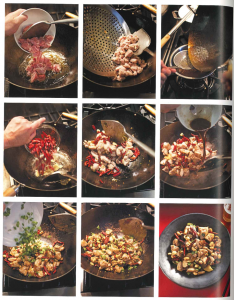When I first made these noodles it could not have come at a better time. It was the first semester of my junior year and after a whole school year of dry chicken breasts and frozen chicken nuggets, I had grown tired of the whole “I’m an adult and I can cook on my own” thing. What I wanted was simple. I wanted to cook cheap, delicious meals, and I didn’t want to spend exorbitant amounts of time cooking them either. I decided to search online for ideas. Originally, I set out to determine how to emulate Kung Pao chicken from Pei Wei, but after realizing that any viable choice involved way too much time and effort, I settled on simply looking at Asian recipes. That’s when I stumbled across a recipe on the Budget Bytes website for spicy Asian noodles. I made them the first time and I was hooked. I added a meat (chicken) so that the meal would be more filling and nutritious. The combination of the noodles and chicken is really delicious and will definitely add some flavor to your life!
Noodles:
4 oz. (1/3 package) lo mein noodles
2 Tbsp. butter
1 egg
1 Tbsp brown sugar
1 Tbsp soy sauce
1 Tbsp sriracha (you can use more or less depending on how spicy you want it)
¼ Tsp. Crushed red pepper flakes
Chicken:
2 medium sized chicken breasts
1 bottle of Oy Vey Spicy and Sweet Chili Heat marinade
Directions:
Chicken:
- Place two medium sized chicken breasts in a Ziploc bag. Add enough of the marinade to thoroughly coat all sides of the chicken breasts.
- Let them marinade for 4-5 hours (the longer the better- the more flavorful they will be!)
- Cook chicken in a non-stick baking dish lined with foil at 350° for 25-30 minutes or until done.
Noodles:
- First, take a large pot and fill it half full of water. Put it on the stove and begin to boil it.
- While the water is heating up, go ahead and prepare the sauce for the noodles. Take a small bowl and combine the brown sugar, soy sauce, and sriracha. Stir them together until they are well-blended (hint: there should be no graininess from the brown sugar)
- By this point, the water should be boiling. Add the noodles into the pot and cook for about 6 minutes (or according to package).
- In a large pan, melt the butter over medium heat on the stove. As the butter is melting, sprinkle the red pepper flakes into the pan. Crack the egg into the pan and stir around until it has been scrambled. Turn off the heat once the egg has cooked.
- Once the noodles are done cooking (they should be very tender,) drain all the water and add the noodles to the same pan with the egg. Put the heat on very low so that the food will stay warm.
- After adding the noodles, add the sauce as well. Stir pan until the noodles have been sufficiently coated with sauce. Once the noodles have been coated, they are done!
Now, serve the chicken on top of the noodles and most importantly, enjoy!
Adapted from: https://www.budgetbytes.com/2012/08/spicy-noodles/
Notes:
If you have a hard time finding lo mein noodles, try looking in the cultural cuisine aisle at the grocery store. It took me a really long time to find them the first time but eventually I did. The chicken marinade pairs really nicely with the flavors from the noodles, but you don’t have to use that specific one. There are lots of Asian sweet-and-spicy marinades that could be used, and sometimes I coat the chicken in the same sauce as the noodles.

 While I think most recipes are of good structure, there are definitely some out in the world that are not easy to follow. For instance, when a recipe is out of order it is expected for the audience to know how to make the dish when most of the time, the audience members trying to make the dish do not even make food following recipes very often. Many times there are hand-written books for recipes that are given to people who want to cook. A key issue with this sometimes is that handwriting may be bad and hard to read. Luckily, I believe that there are more good recipe books, videos and ways to share recipes out there than there are bad. I enjoy authors sharing their recipes very much as I think it is very interesting and fun to make new things. I look forward to making more in the near future thanks to this class!
While I think most recipes are of good structure, there are definitely some out in the world that are not easy to follow. For instance, when a recipe is out of order it is expected for the audience to know how to make the dish when most of the time, the audience members trying to make the dish do not even make food following recipes very often. Many times there are hand-written books for recipes that are given to people who want to cook. A key issue with this sometimes is that handwriting may be bad and hard to read. Luckily, I believe that there are more good recipe books, videos and ways to share recipes out there than there are bad. I enjoy authors sharing their recipes very much as I think it is very interesting and fun to make new things. I look forward to making more in the near future thanks to this class!